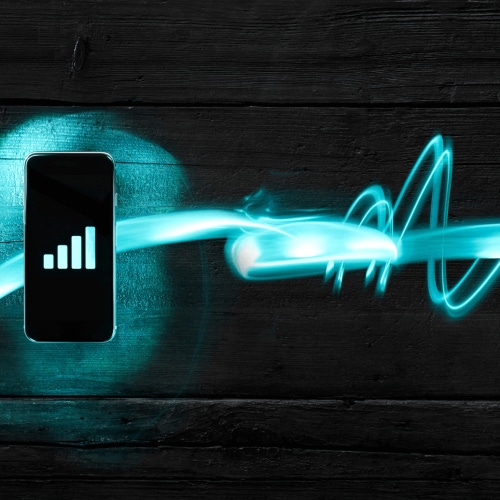
Deutsche Telekom, Orange, Telefónica and Vodafone have clubbed together – working alongside tech company Matsuko – to pilot holographic calls.
Using unmodified smartphones, which send 2D video to the cloud where it's rendered into 3D holograms, the trial was done from multiple locations: Madrid, Bonn, Paris and Dusseldorf.
The quartet of European operators said the ultimate aim is to make setting up holographic calls as easy as traditional ones.
Figure 1:  Deutsche Telekom, Orange, Telefónica and Vodafone, working with tech company Matsuko, want to make holographic calls as easy as traditional ones.
Deutsche Telekom, Orange, Telefónica and Vodafone, working with tech company Matsuko, want to make holographic calls as easy as traditional ones.
(Source: Philipp Dimitri/Westend61 GmbH/Alamy Stock Photo)
The pilot's first phase, a Telefónica spokesperson told Light Reading, was done using throughput speeds of between 2 Mbit/s and 4 Mbit/s and a latency of 40-60 milliseconds, through a mixture of 5G and edge computing.
"The expectation is that we are able to increase the hologram quality by increasing these two parameters," said the Telefónica spokesperson. "We see in the future the need for 30 Mbit/s and 5-10 milliseconds latency in the network access."
The later "multiple phases" of the trial, anticipated by the spokesperson, will continue with Matsuko and "other telcos" this year and the next.
Holographic content, asserted the official announcement, can also be "streamed to viewers in an AR/VR/MR environment with a clarity and sharpness never previously possible."
The announcement also stated that previous "network-related issues," which "impeded the smooth and natural holographic movement of the holograms," have apparently been resolved.
Marvelous Matsuko
Matsuko's 'platform' also got fulsome praise, as it enables "better color and texture resolutions" and increases realism when viewed on a smartphone or other mobile device – all without the need for a video headset.
Want to know more? Sign up to get our dedicated newsletters direct to your inbox.
"We are confident that in the near future, we will be able to offer our customers a new way of communicating, using this new holographic technology to deliver a more immersive 'virtually there' experience," said Daniel Hernández, VP of devices and consumer IoT at Telefónica.
"Our cross-operator collaboration with Matsuko will help to accelerate this innovation and ensure that it works no matter which operator you choose."
Related posts:
— Ken Wieland, contributing editor, special to Light Reading
Read more about:
EuropeAbout the Author(s)
You May Also Like











